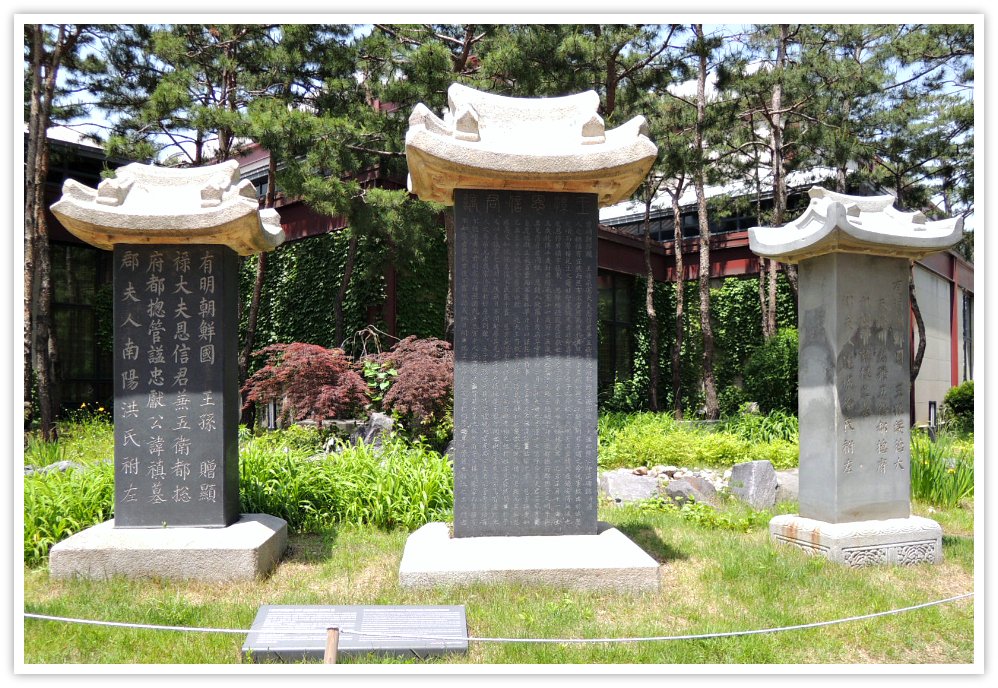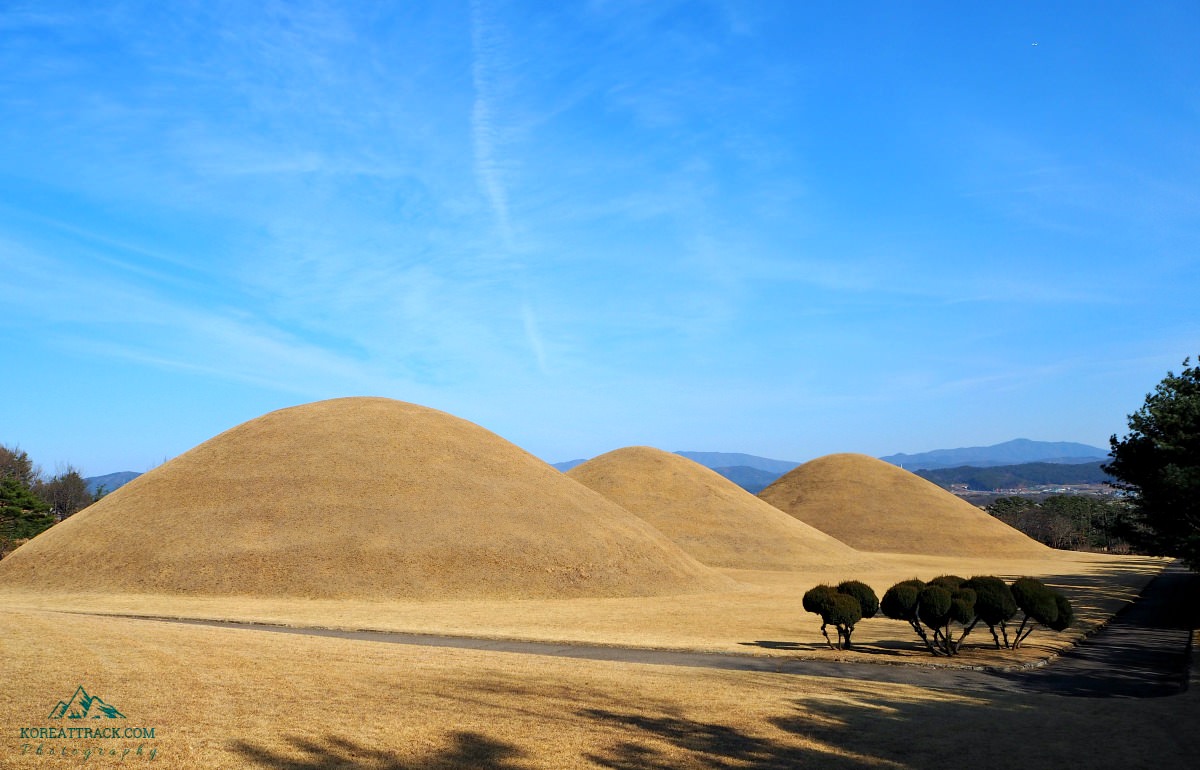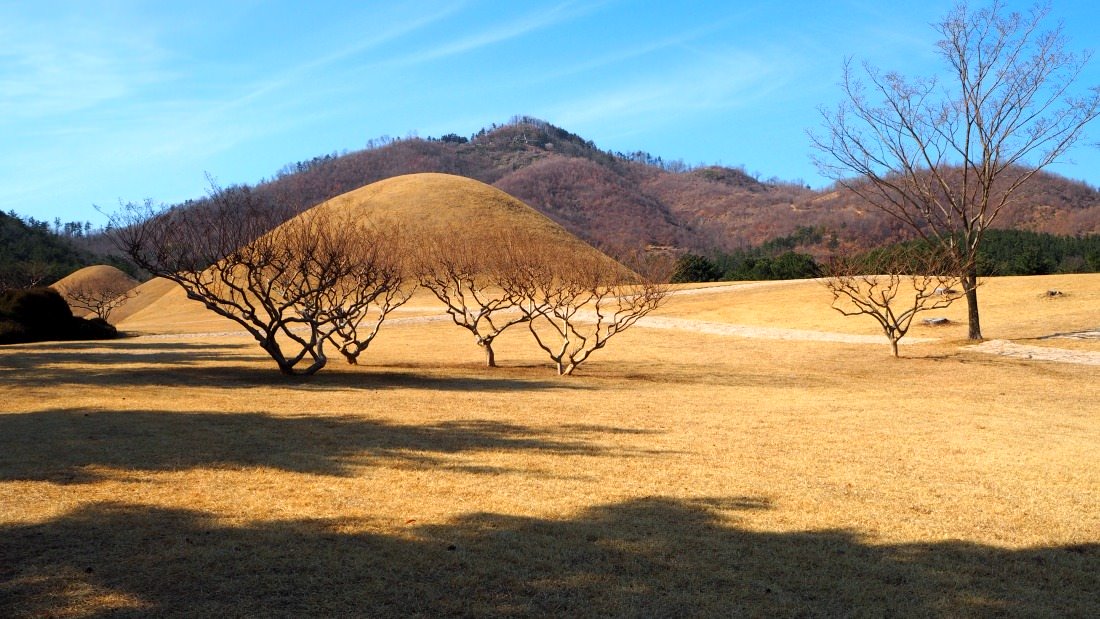Underwater Tomb of
King Munmu
 Tomb of King Munmu in Gyeongju
Tomb of King Munmu in GyeongjuTomb of King Munmu
The tomb of King Munmu is an underwater tomb lying nearby the beach area in Gyeongju City, Gyeongsangbukdo Province, South Korea.
King Munmu was the 30th king of Silla Kingdom (now Gyeongju), the ancient capital of the kingdom.
The burial place of Munmu of Silla lies in 26, Bonggil-ri, Yangbuk-myeon, Gyeongju, North Gyeongsang Province. It is located 200 meters off the coast of Bonggil-ri in Yangbuk-myeon.
The King's tomb is designated as Historical Site No. 158, likewise known as Daewangam in the Korean language. You can enjoy this site and its surrounding panorama through the windows of a cafe nearby.
Due to its interesting stories and legends, visitors flock to see it and relax with the serene atmosphere while taking advantage of the facilities around.
 Tomb of King Munmu during sunset
Tomb of King Munmu during sunsetHowever, since most travelers to Gyeongju City would instead explore the more popular sites within the city but not outside it.
Therefore, one might miss out on exploring this historical and exciting part of Gyeongju's history. Not only history but also the beautiful part of Gyeongju's outskirts and coastal area.
You will be amazed by the sight of the blue sea and the scenery of Korea's east coast.
To see Gyeongju's east coast, it is highly recommended that you travel the area with the following order...
- Kirimsa (Temple)
- Golgulsa (Temple)
- Gameunsa temple site
- Underwater Tomb of King Munmu, and
- Igyeondae Pavilion
 Tomb of King Munmu
Tomb of King MunmuAmong those sites mentioned, in 2017, the burial place of Munmu of Silla was chosen as "the leading ten traveler destinations" of Gyeongsangbukdo Province.
If you don't know yet, Gyeongju City is on top of the list among the tourists' attractions in the whole of South Korea.
But it's all up to you since you are in control of your time and plans. Now, let me continue describing a bit more about the king's unique gravesite...
Unique Tomb of King Munmu
 The village near King Munmu's underwater tomb
The village near King Munmu's underwater tombIt is the only undersea royal tomb that we know of in the whole world. It looks like ordinary rocks from a distance. Therefore, one has to scrutinize the rock to find the right grave of the King.
The location is surrounded by little rocks that can be seen at low tide intervals, making them appear like stone beams. It is now under the care of the Gyeongju National Museum.
The stone is a reddish-brown igneous rock with a height of 52cm, 64cm broad, and 24cm thick. And the little section is sculpted with a 2-legged triangle.
It is believed that the Silla people artificially improved the royal burial place of Munmu of Silla.
Silla Dynasty
When Japan broke out on the East Sea and killed and pillaged the people, 'Munmu of Silla' began to build temples while increasing military and defense facilities on the east coast.
It is called Daewang-am, and it is the tomb of King Munmu of Silla. When 'Munmu of Silla' passed away before completing the temple, his son King Sinmun finished it in 682.
Cho Geung-seop, who explored Gyeongju from 1918 to 1926 throughout Korea under Japanese rule, wrote a poem utilizing the burial place of Munmu of Silla.
 Shown here is the tomb of King Muyeol, the father of King Munmu who started the unification efforts of the three kingdoms
Shown here is the tomb of King Muyeol, the father of King Munmu who started the unification efforts of the three kingdomsKing Munmu
Who Is King Munmu
Briefly, King Munmu was the 30th king of the Silla Dynasty. He was the son of King Taejeong Muyeol and Queen Munmyong, the younger sister of General Kim Yushin (7th century).
King Munmu was considered the king who unified the three kingdoms (Goguryeo, Shilla, Baekje). This struggle to unite the kingdoms was handed over to him by his father, King Muyeol.
The Unified Silla Kingdom was the end of the fights and suffering of all three kingdoms. The unified kingdom has brought Korea's great historical legacy to the present.
King Munmu effectively ruled the kingdom for 21 years and died in 681. In his deathbed, he wished and willed that his body was cremated and poured in the East Sea.
If his will is done, he believed that he would become and a dragon and continue to protect his kingdom against the foreign invaders.
As a king, his will was followed after the seventh day of his death. His ash was poured on the rock at the mouth of the East Sea.
This very rock is now also known as the "Daewangam" in Korean, which means "Great King's Rock."
 Site of Gameunsa Temple
Site of Gameunsa TempleA Tale of Manpasikjeok
Sinmun of Silla constructed Gameunsa (Temple) for his father, King Munmu of Silla. In 682, a public official mentioned that there was a small mountain in Donghae that will come to Gameunsa.
According to the fortune-teller, King Munmu of Silla, who became the dragon of the sea, and Gim Yu-sin, who ended up being the King of paradise, said, "Head out and take the present."
When he came and saw at Igyeondae, it appeared like a turtle's head and had bamboo on it, divided into two by day and combined into one by night.
Nine days after the storm, the King went into the mountain, and the dragon said,
"If you made a flute out of that bamboo, the entire world would be at ease."
So he took it out, made a flute, and kept it. The name of this flute is Manpasikjeok. The reason for the name is that when the country is worried, he played the flute, and land has become quiet.
King Munmu's Tombstone
It is assumed that Munmu of Silla's tombstone was developed at Sacheonwang Temple, a place that was associated with Munmu of Silla period.
Based on the excavation research study, the two royal tombs are believed to be Sacheonwang Temple Historical Hall and Munmu of Silla's Royal Palace.
With the fall of Silla, Munmu's tombstone has also become unknown. However, later on, Hong Yang-ho verified its existence, in 1760, and was reconfirmed by Chusa Gim Jeong-hui in 1817.
The lower part of the tombstone was discovered in 1961. While a gas inspector found the lower part of the headstone in 2009. It was used as a laundry stone in a home in eastern Gyeongju when found out.
 Shown above are tombstones of royals which are accessible at Seoul History Museum
Shown above are tombstones of royals which are accessible at Seoul History MuseumRitual Offerings to the Tomb of King Munmu
Being revered as the king who sincerely committed his life for the protection of his territory and people, even the locals of today pay respects to the king's tomb.
During special days, people would come to pay respects by offerings prayers, asking for favors, and offering sorts of food, fruits, and drinks to the king who they believe still watching over and protecting them.
One particular is the Korean lunar holiday called Samjinnal. This is the day that many locals and people from the neighboring towns would visit and perform their traditional religious rituals.
If you want to see this scene and festive atmosphere, you can plan ahead and include this site as part of your Gyeongju travel.
If not, you may come anytime to experience just the sea winds and silence to feel the presence of the protector king's spirit!
Samjinnal is the day that King Munmu decreed as the day of rest. The reason being that this is the beginning when snakes wake from their winter hibernation.
Also, it is the time when swallows start to return from the southern region during the winter season.
Among the folks who believe in the importance and meaning of Samjinnal, they prepare various food ingredients thinking that they taste more delicious if compared to ingredients or seasonings prepared during ordinary days.
Such ingredients or seasonings include the soy sauce, red pepper paste, fermented bean paste, among others.
I believe that's an interesting explanation for the better taste. But you can also think that probably it is due to the change in weather. It is when the weather starts to turn mild and warmer and not freezing cold!
Since the area near the tomb of King Munmu is beach area, you will expect some visitors and tourists strolling around. You will also, if interested, see various seafood being dried by the roadsides.
One can have a great view of King Munmu's tomb, or Daewangam if you are at the Igyeongdae Pavilion. It is believed to be where King Munmu lifted to the skies and turned into a dragon.
I hope you find this story interesting.
Enjoy your travels!
- Home
- Gyeongsangbukdo Travels
- Tomb of King Munmu
Get Exciting Activities
Book one of our exciting activities today to experience the thrill of a lifetime! Take advantage of this opportunity and secure your spot in advance.
Hotel Map Guide
Find your affordable, accessible, and comfortable hotel in Seoul at Agoda.Com. See the hotel map below...
Hotel Booking Guide
Find affordable and amazing hotels on Agoda.com using the search box below. Book now to enjoy great discounts and save!







New! Comments
What do you think about this page? Leave me a comment in the box below.